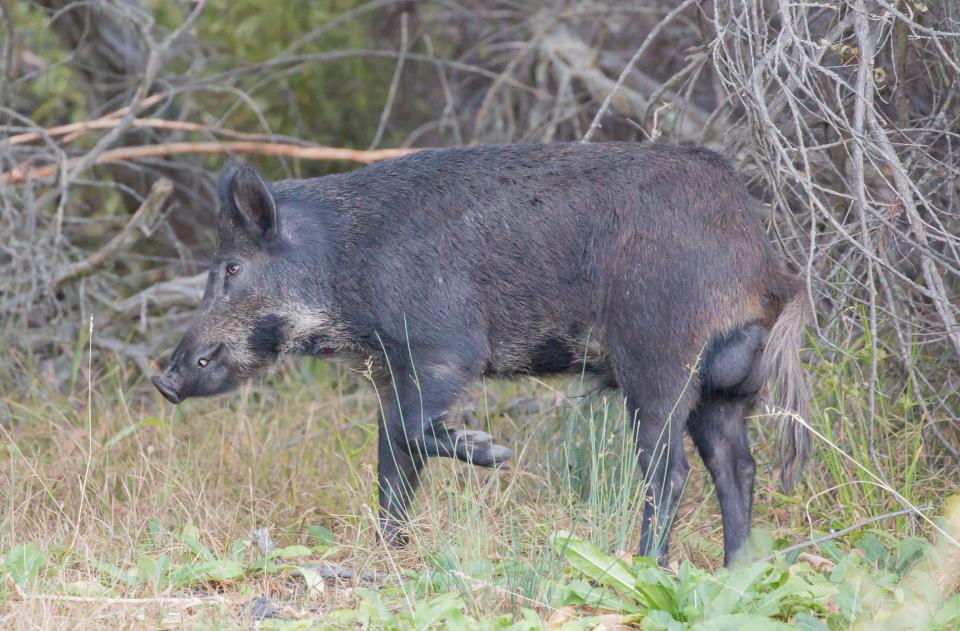Louisiana is overrun with menacing wild hogs, but bounty for pig tails isn't answer
- Oops!Something went wrong.Please try again later.
- Oops!Something went wrong.Please try again later.
Eight years ago Louisiana's then Wildlife and Fisheries Secretary Robert Barham warned the feral hog population was exploding in such massive numbers that they may one day be rooting up Huey Long's grave on the Capitol grounds.
“I agree that they are a horrific plague and wouldn’t be surprised to find them rooting in the garden by the statue,” Barham said during a 2015 hearing on a bill that would expand the hunting season on the beasts to year-round.
Since then the feral hog population in Louisiana has gone from 600,000 to nearly 1 million, about the same as the combined human population for the state's largest four cities - New Orleans, Baton Rouge, Shreveport and Metairie, a suburb of New Orleans.
That led to Republican Shreveport state Rep. Alan Seabaugh filing a bill that would offer a $5 bounty on each wild swine tail turned into the state.
"They're a menace," Seabaugh said.
But Seabaugh parked his bill following a House Natural Resources hearing this week where Agriculture Commissioner Mike Strain explained there are better options for reducing the population.
Louisiana has the third largest feral hog population in the U.S. Only Texas and Oklahoma have more (up to 1.5 million in each state).
A study by the LSU AgCenter estimates feral hogs cause upward of $100 million in agriculture damage each year in Louisiana.
“Feral swine continue to be a growing problem to farmers, ranchers, foresters and landowners in many areas of the U.S. and are considered to be one of the most damaging invasive species in existence,” wrote LSU AgCenter study authors Michael Salassi, associate vice president and program leader for plant and animal sciences, Melissa Cater, director of the northeast region; and Glen Gentry, director of the Doyle Chambers Central Research Station and the Bob R. Jones-Idlewild Research Station.
They root up, wallow in and trample crops, tree seedlings and wildlife food plots. They also are known to wreak havoc on pastures, drains, levees, fences and waterways.
And they can be dangerous, which is why Republican state Rep. Jack McFarland, who operates a logging business, cut off an interview with a reporter last fall while he was working in the woods.
"I just walked up on a bunch of wild hogs and I don't need those bastards charging me," a startled McFarland said before getting off the phone.
"They can be aggressive," Strain said.

The population problem?: Feral hogs multiply quickly, with sows able to have two litters of five to six piglets each year and few natural predators.
Experts at the LSU AgCenter estimate 70% of the feral hog population would have to be killed each year just to stay even.
"We're losing ground," Strain said during the hearing.
More: Louisiana senators refuse to let opposition testify, advance library restriction bill
But Strain said help may be on the way with a poison being developed in conjunction with the LSU AgCenter and a growing number of traps that can be funded by the Legislature.
"That's a more cost-efficient and effective way," Seabaugh said in agreement.
"Investing dollars into research and traps is more worthwhile," Strain said.
Greg Hilburn covers state politics for the USA TODAY Network of Louisiana. Follow him on Twitter @GregHilburn1.
This article originally appeared on Lafayette Daily Advertiser: Nearly 1 million wild hogs wreaking havoc on Louisiana farms, forests

